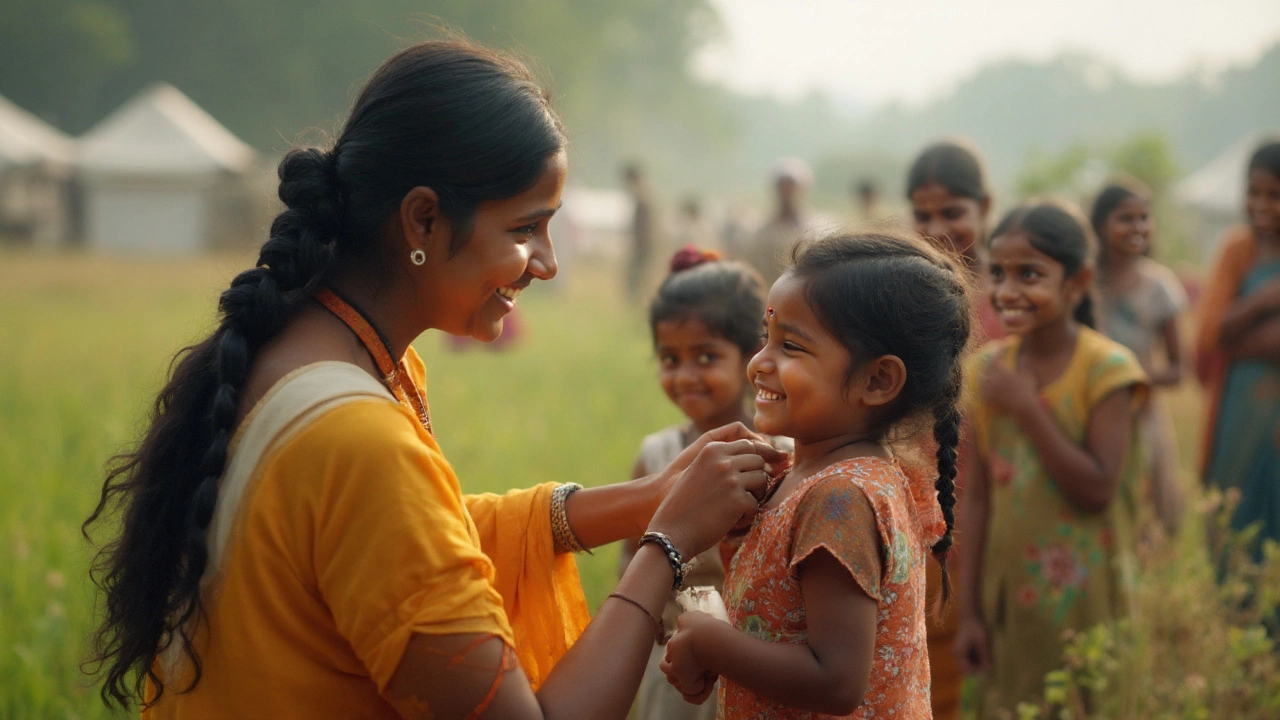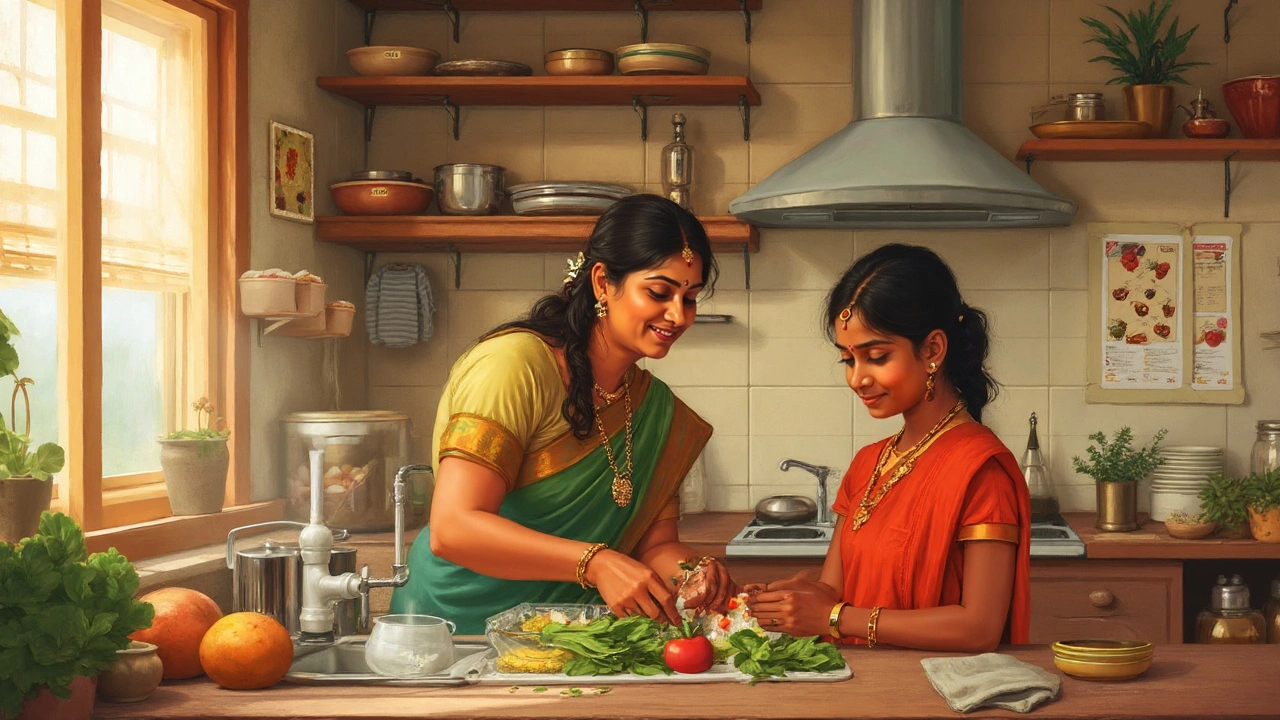Public Health in Daily Life: Real-World Examples & How They Shape Our Wellbeing
 Aug, 5 2025
Aug, 5 2025
Ever thought about how often public health shapes your everyday habits without you even realizing it? Take the dog park around the corner—well, my mate Whiskers drags me there every other day—and notice those little bags everyone carries for pet waste. Or remember the last time you saw someone sneeze into their elbow instead of their hand? These moments aren’t just random good manners. They’re public health in action, working like background apps that keep our communities running smoothly.
The Invisible Shield: Hygiene Habits We All Follow
Let’s be honest—most of us don’t wake up thinking about germ theory. But every time you wash your hands before eating or after using the loo, you’re playing your part in a gigantic, invisible system designed to protect everyone from illness. This isn’t just about keeping yourself from catching a cold. It’s about stopping the spread of all sorts of bugs: norovirus, E. coli, the flu, even COVID-19. Scientists have tracked handwashing rates and tied them directly to lower sick days in schools and fewer outbreaks in workplaces. Funny to think one of the most powerful tools in public health is sitting atop your bathroom sink right now.
Ever noticed those messages in public toilets? Things like "Wash your hands for 20 seconds." They’re there because studies have shown that reminders (and yes, catchy phrases like ‘Happy Birthday’ hummed twice) increase the odds you’ll actually scrub properly. Hygiene campaigns don’t just stop at sinks, either. Supermarkets put out signs urging you to use provided hand sanitizer on the way in—especially after 2020, when sanitizer became as normal as shopping bags. What’s neat about these habits is that they scale: the more people do them, the bigger the health impact, even if you never see the germs you’re sending down the drain.
And don’t get me started on cleaning up after your pets. It's a big deal in cities like Liverpool, where public campaigns (and spot fines) have made picking up after your dog not just normal, but expected. Leftover waste can spread some nasty stuff—think roundworm, E. coli, and other parasites. It’s a collective effort that keeps the parks safe not just for humans, but for Whiskers and his pals as well.
Here’s a tip: if you want to cut your chances of catching a stomach bug or cold, wash your hands right before eating and after coming home from outside. It beats most fancy supplements you can buy, hands down.
Vaccinations: The Quiet Backbone of Community Health
Think about the last time you queued up at the doctor’s for a jab—maybe the flu vaccine, or a childhood immunization. That jab is more than personal protection; it’s community teamwork at its best. Vaccines wipe out diseases before they can even get close to being a problem. In fact, polio’s vanished from most countries thanks to coordinated public health drives. In places where vaccination rates drop, you’ll see measles and mumps creep back—clear proof that these little vials matter.
School entry requirements are a classic example: kids need to show proof they’ve had certain shots. It’s controversial sometimes, especially with parents worried about side effects, but actual research from the UK and around Europe keeps confirming that vaccination keeps outbreaks rare and short. Herd immunity, as it’s called, is where enough people are immune so even those without vaccines (for medical reasons, say) get protected. It’s public health working at its most generous.
Your GP doesn’t decide these policies on a whim. National health agencies set these schedules after sifting through mountains of data about what diseases are likely, who’s most at risk, and which vaccines work best. Sometimes you’ll see a rush for particular shots—a great example was the COVID-19 vaccine rollout in 2021. Pharmacies and pop-up clinics popped up all over Liverpool, turning regular spots into vaccination hubs. It was a logistical challenge, but most locals rolled up their sleeves, literally and figuratively, to pitch in and get protected.
So next time you’re offered a new vaccine, remember: it isn’t just about you. It’s about the people you see every day—on the bus, at the gym, at the dog park. Your choice feeds into a city-wide safety net.

Food Safety: From Market to Plate
People in the UK love a good takeaway now and then. Ever noticed those food hygiene ratings in the window? That’s a direct result of public health teams doing inspections, setting standards, and keeping everything from street food carts to posh restaurants accountable. It’s not just bureaucratic busywork. In 2010, Liverpool had a food poisoning outbreak traced to a dodgy batch of chicken. Afterward, public health folks overhauled oversight, leading to stricter checks and clearer signage. Sick days dropped, fewer complaints—real changes you could feel.
Public health’s role in food safety starts long before your order’s called out. Suppliers have guidelines about how to store and transport food, workers get trained on personal hygiene, and there are rules about handwashing, glove use, and cleaning surfaces—things you don’t see but can taste in every safe bite. Every time you scan a food label for ingredients or allergens, thank public health policy. Those labels weren’t always there; they were pushed for after decades of allergic reactions and contamination scares made the risks impossible to ignore.
There are even local tips for food safety you can try at home: keep your fridge below 5°C, separate your raw meat from other groceries, and never leave cooked food on the counter for more than two hours. These habits aren’t just fussy—they’re proven to slash foodborne illness. I once had a rough bout with undercooked sausages at a barbecue. Trust me: a simple meat thermometer would’ve saved a week of misery.
Food safety goes both ways: the more vigilant you are as a consumer, the stronger the system. For instance, reporting dodgy food or unclean restaurant conditions to environmental health officers helps everyone. Public health is definitely a team sport.
Clean Air and Water: The Basics We Rarely Pause to Appreciate
Step into Liverpool city centre after a drizzly morning, and the air feels fresher than usual. But for years, this city—like much of the UK’s industrial north—faced nasty smog and water pollution. Public health officials helped push for clean air laws, better waste disposal, and high-tech filters on factories. They’re why people breathe easier today and why you don’t see warnings about ‘unsafe drinking water’ taping up local playgrounds.
But this effort isn’t static. When traffic levels rise and pollution spikes (think of heatwaves when air quality drops), public health experts dive into city planning—advocating cycle paths, more green spaces, and tweaks to bus routes. Every one of those decisions stacks up to reduce hospital visits due to asthma or heart troubles during bad-air days. A 2023 report from Public Health England showed emergency admissions for childhood asthma in Liverpool fell by nearly 18% after cleaner street policies took hold. That’s the kind of quiet progress you don’t see on the news but can feel in each easy breath.
People often take clean water for granted, too. The complex web of checks behind every glass is impressive: from reservoir management to water treatment testing for bacteria and polluting chemicals. In 2017, a broken water main in my neighborhood meant trucks brought in bottled water for two days—and everyone suddenly realized just how much we rely on smooth systems. Public health agencies turn potential disasters into minor blips by working behind the scenes, updating aging infrastructure, and running daily tests.
When the tap runs clear and the air’s fresh, that’s public health working at its best—hours of planning and action for invisible, everyday wins.

Mental Health and Community Support
Here's something you might not link right away to public health: that friendly sign for a helpline at the bus stop, or free walking groups in local parks. Public health isn’t just about dodging diseases; it’s about supporting minds, too. Isolation, anxiety, and depression affect physical wellbeing—it’s all connected. During the pandemic, Liverpool saw a surge in calls to mental health helplines launched by the local council. Flexible therapy appointments, crisis lines, support for parents or carers—these were all stitched together under public health umbrellas.
There’s real science behind these efforts. The famous "Five Ways to Wellbeing"—connect, be active, keep learning, give to others, take notice—were tested by the UK’s New Economics Foundation and rolled out in loads of cities because they actually help. The NHS and city councils push group activities, peer support sessions, and even urban walking schemes because social connection and movement cut risk of serious illness, save money for hospitals, and make people generally happier.
A simple community tip: next local event, join in—even if you’re not sure you’ll like it. Being around people or just moving about is more protective than you think. These aren’t nice-to-have extras; they are part of the everyday public health net.
Public health teams also fight misinformation about mental illnesses, work to make workplaces less stressful, and support schools with counselors and anti-bullying programs. Whenever you see tips about managing stress, local yoga sessions, or guides to local support groups, that’s more public health at work.
From washing your hands to clear air, from vaccines to tackling loneliness, public health is everywhere—woven right into the fabric of daily routine. You can’t always see it, but you’d absolutely miss it if it vanished for even a week.